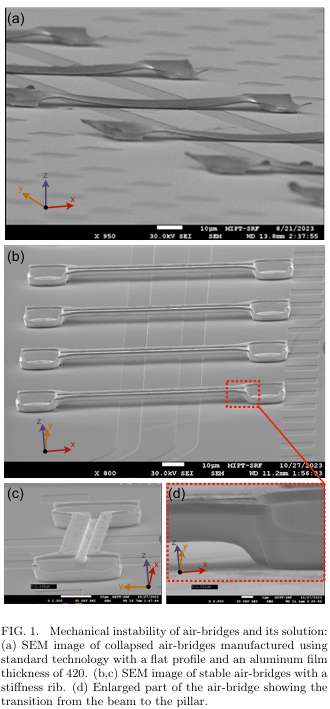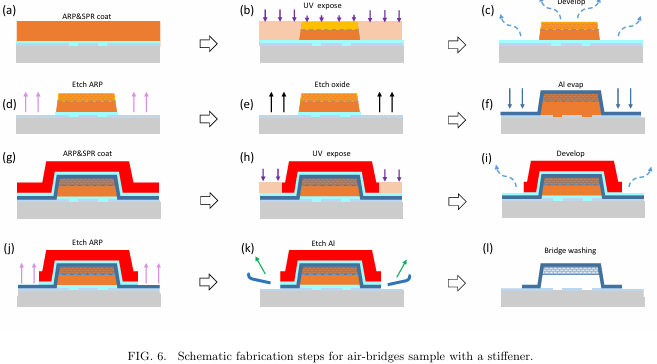Highly Stable Aluminum Air-bridges With Stiffeners
2024-11-09 09:32
2744 浏览
Source: https://arxiv.org/abs/2410.23028


Abstract: Air-bridges play a critical role in the performance of microwave circuits integrated with superconducting quantum bits, and their mechanical stability is predominant for reliable operation. This study is devoted to the technological issues that lead to air-bridge instability. We propose an optimized bridge geometry designed to enhance mechanical resilience. Through systematic testing, we established that bridges incorporating this novel geometry achieved complete stability for lengths up to 170 micrometers in our technological processes. The findings provide an insight into the problem and a practical solution for technologists that faced with the challenges of air-bridge stability. The implementation of our technology has the potential to significantly improve the mechanical robustness of air-bridges in multi-qubit circuits for quantum computation.


Conclusion: We analyzed the causes of air-bridge deformation and estimated the primary forces acting on the bridges during the fabrication process. Our analysis indicates that bridges predominantly deform due to two types of forces. The first type is the surface tension of the liquid during the bridge washing process. Therefore, we optimized this process to ensure that the surface tension coefficient of the solvent is minimized when it is removed from the chip surface. The second type is the aerodynamic pressure exerted on the bridges when the chip is blown with nitrogen. For bridges fabricated using our technology, we conducted a series of ”crash tests” under various airflow conditions. The results of these tests enabled us to identify a set of optimal parameters for this process that enhance the mechanical stability of the
bridges.
Analytically predicting and confirming with experimental data, we demonstrated how changes in the height of bridges impact their mechanical stability. Specifically, our tests showed a significant increase in stability for bridges with a stiffening rib. We have thoroughly described the fabrication conditions for bridges of this configuration and suggest that our findings will be benefitial for technology teams facing issues with the low mechanical stability of bridges and seeking solutions to this challenge.
